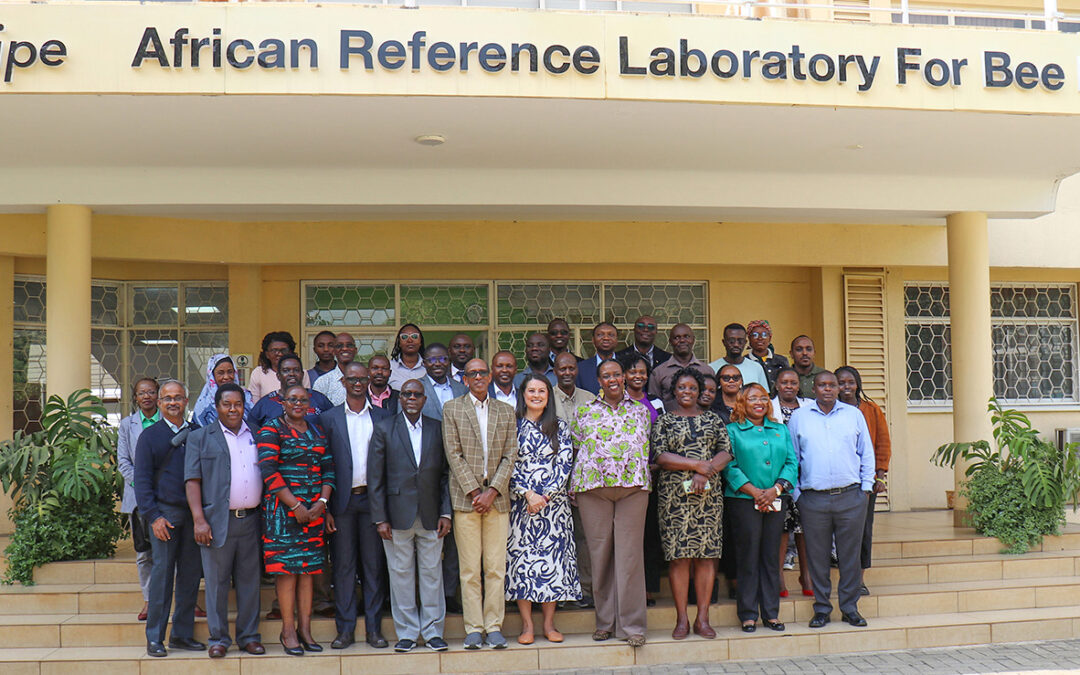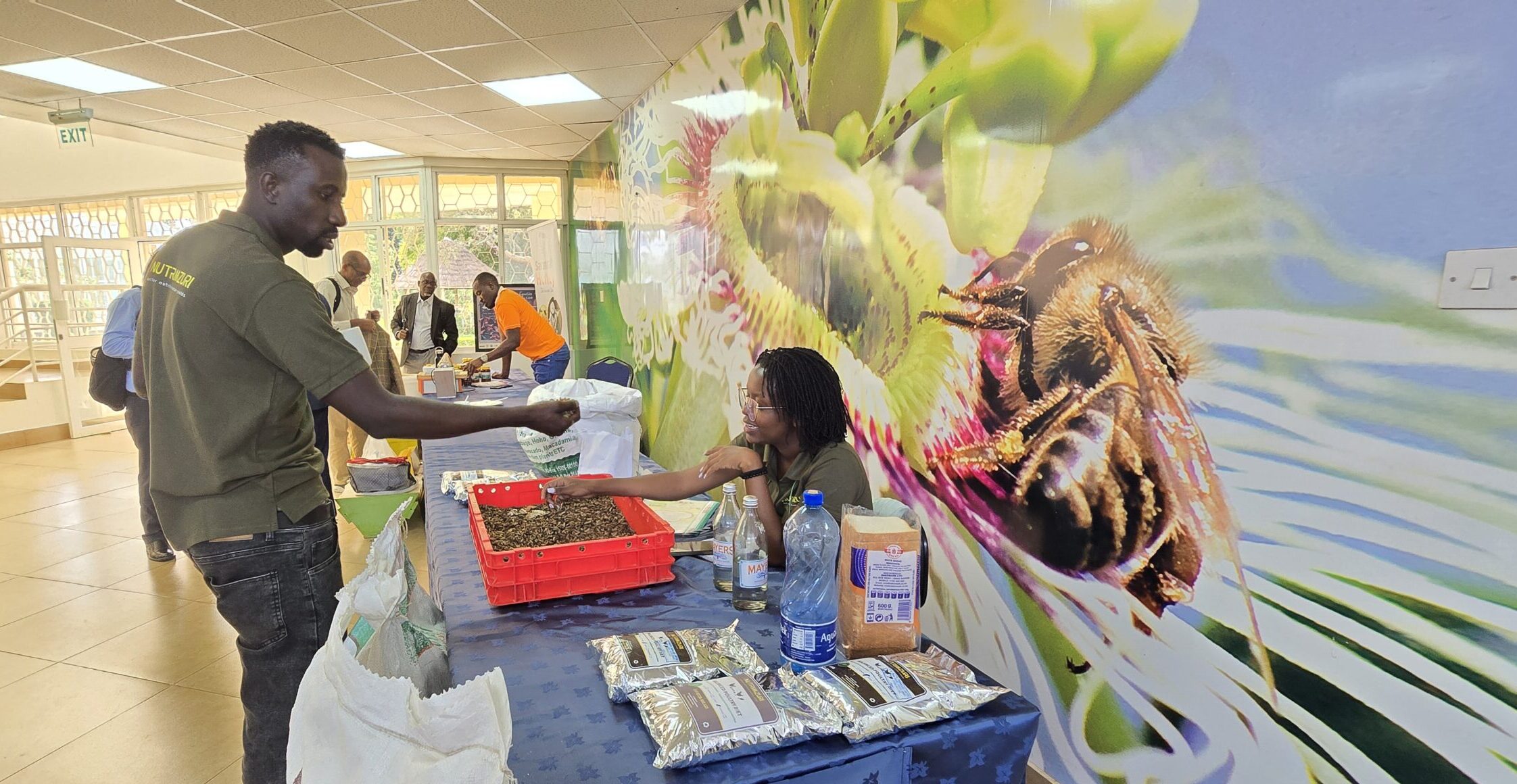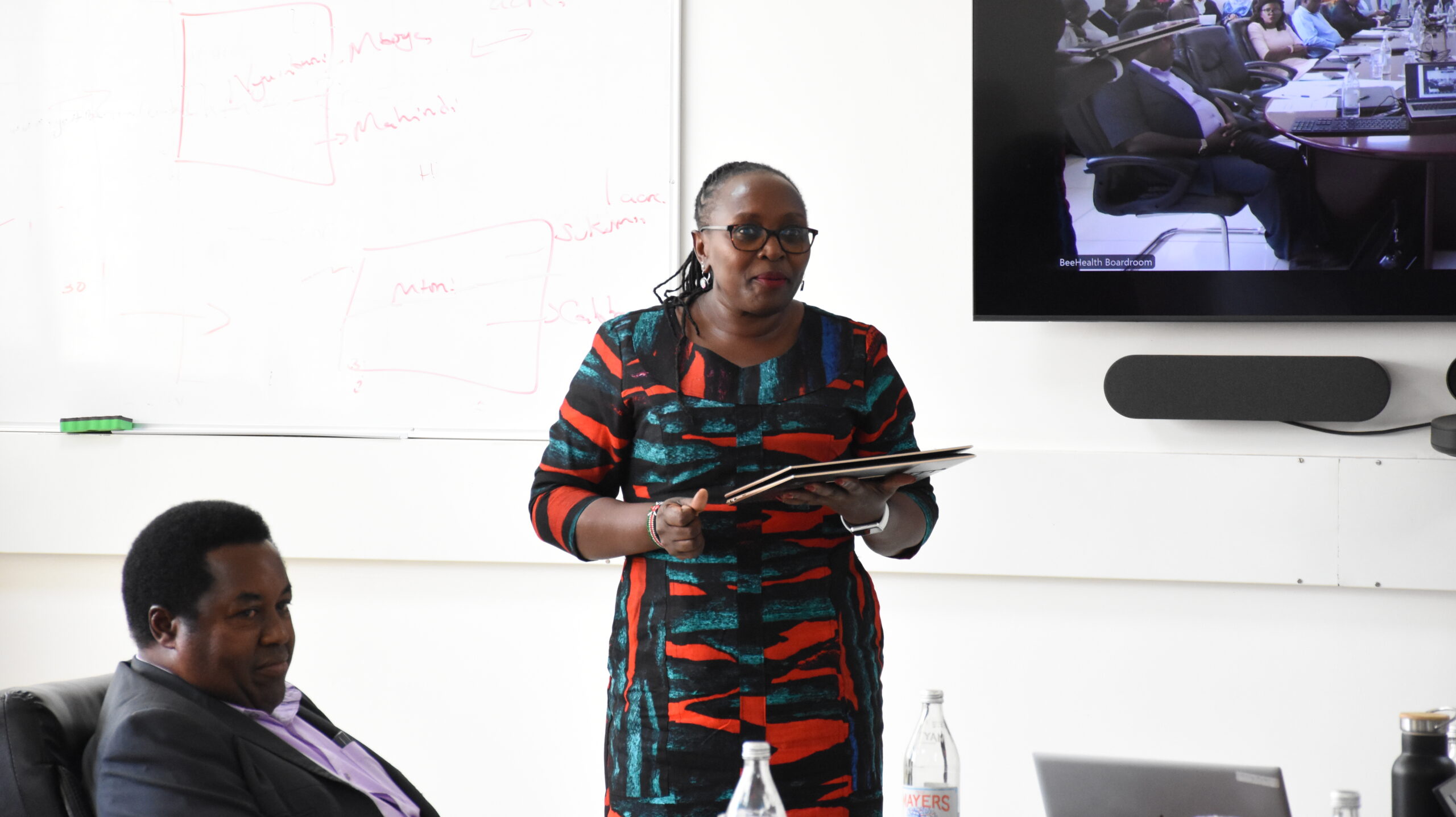By Keta Mwangala, Warren Arinaitwe, Dennis Ong’or, and Jean Claude Rubyogo (Alliance of Bioversity International and CIAT); Ayuka Fombong, and Sunday Ekesi (icipe)
“Farming is like raising a child. You nurture, protect, and when it’s ready, let it grow into something bigger than you imagined,” said Mercy Loko, a Kenyan youth farmer, who fondly refers to beans as the “mother crop” – echoing generations of wisdom passed down from her mother. Mercy inherited not only a passion for beans, but also a deep understanding of their place in sustaining households and communities. Today, she stands among thousands of farmers embracing a new wave of agricultural transformation, one that blends tradition with innovation, and beans with fruit trees, insects, and income diversification.
Her story captures the essence of a year marked by bold interventions, resilience, and progress under the Building Equitable Climate-Resilient African Bean and INsect Sector (BRAINS) Project. From field to forum, these values were brought into focus on June 27, 2025, when over 40 partners – comprising donors, Sub regional organizations, farmer organizations, government agencies, and private sector – gathered in Nairobi, Kenya, to celebrate milestones, reflect, challenge assumptions, and contribute to shaping of solutions for Year two and beyond.
Since its inception, BRAINS has identified and secured implementation regions in 13 out of 15 participating countries across sub-Saharan Africa, laying a strong foundation for scaled, context-specific interventions. To date, 26 Sustainable Technology Innovation Bundles (STIBs) have been developed and deployed. These integrated packages, combining high-iron beans, fruit trees, and insect-based technologies, are designed to boost productivity, improve nutrition, and promote environmental sustainability.
Setting the tone for the gathering, Global Bean Leader and Director of the Pan-Africa Bean Research Alliance (PABRA), Jean Claude Rubyogo, reaffirmed BRAINS’ core mission: building climate-resilient, inclusive agricultural systems through demand-led research and collaborative innovation. He emphasized that BRAINS’ Theory of Change is not static, but a living framework continually shaped by farmers’ realities, evolving markets, and environmental shifts.
“We are not just delivering technologies—we are co-creating solutions with those who live the problem every day. If it doesn’t work for the farmer, it doesn’t work,” Rubyogo said.
Strategic partnerships and systems growth
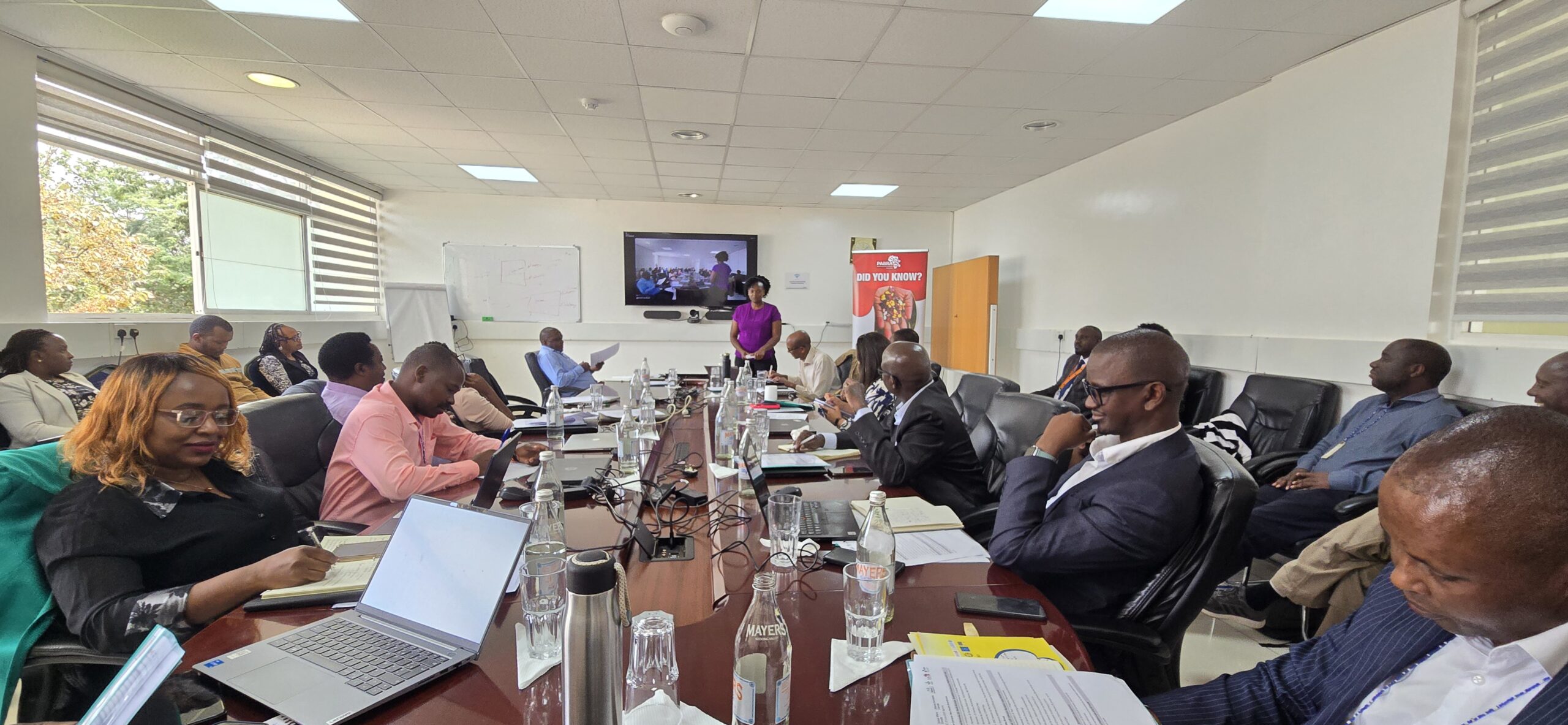
Participants reviewing the first year of the BRAINS Initiative and collaborate on mapping the roadmap for year two and beyond
The meeting stressed the need for continued regional collaboration and context-specific innovation. International Centre of Insect Physiology and Ecology (icipe) Deputy Director General Dr. Sunday Ekesi, highlighted the power of diversification and applauded his organization’s long-standing partnership with Canada since 1995 and the key roles of The Alliance of Bioversity International and CIAT (The Alliance) and Kenya Agricultural and Livestock Research Organization (KALRO) in driving BRAINS agenda forward.
“Resilience grows where diversity thrives. From beans to fruit trees to insects, we must give farmers multiple pathways to survive—and succeed,” he said.
On his part, Dr. Ousmane Ndoye, West and Central African Council for Agricultural Research and Development (CORAF) representative, brought a strategic geopolitical perspective to the discussion, emphasizing that BRAINS is well-positioned to extend its impact beyond. By aligning with Economic Community of West African States (ECOWAS) climate strategies, he noted, the project can both contribute to and benefit from broader regional policy frameworks. This alignment creates an enabling environment where innovation is not only localized, but also institutionalized and scalable.
“Innovation must move faster than climate change. That means working across regions, aligning with policies, and scaling smart,” said Ndoye.
In the Initiative’s initial year of implementation, direct engagement has already reached over 13,000 farmers across pilot sites, with scalable models now in development to expand outreach to millions through cooperative-led and community-based platforms. In parallel, the project has finalized targeted strategies on gender, youth, and nutrition, supported by practical training modules and tailored communication materials to ensure an inclusive, equitable, and lasting impact.
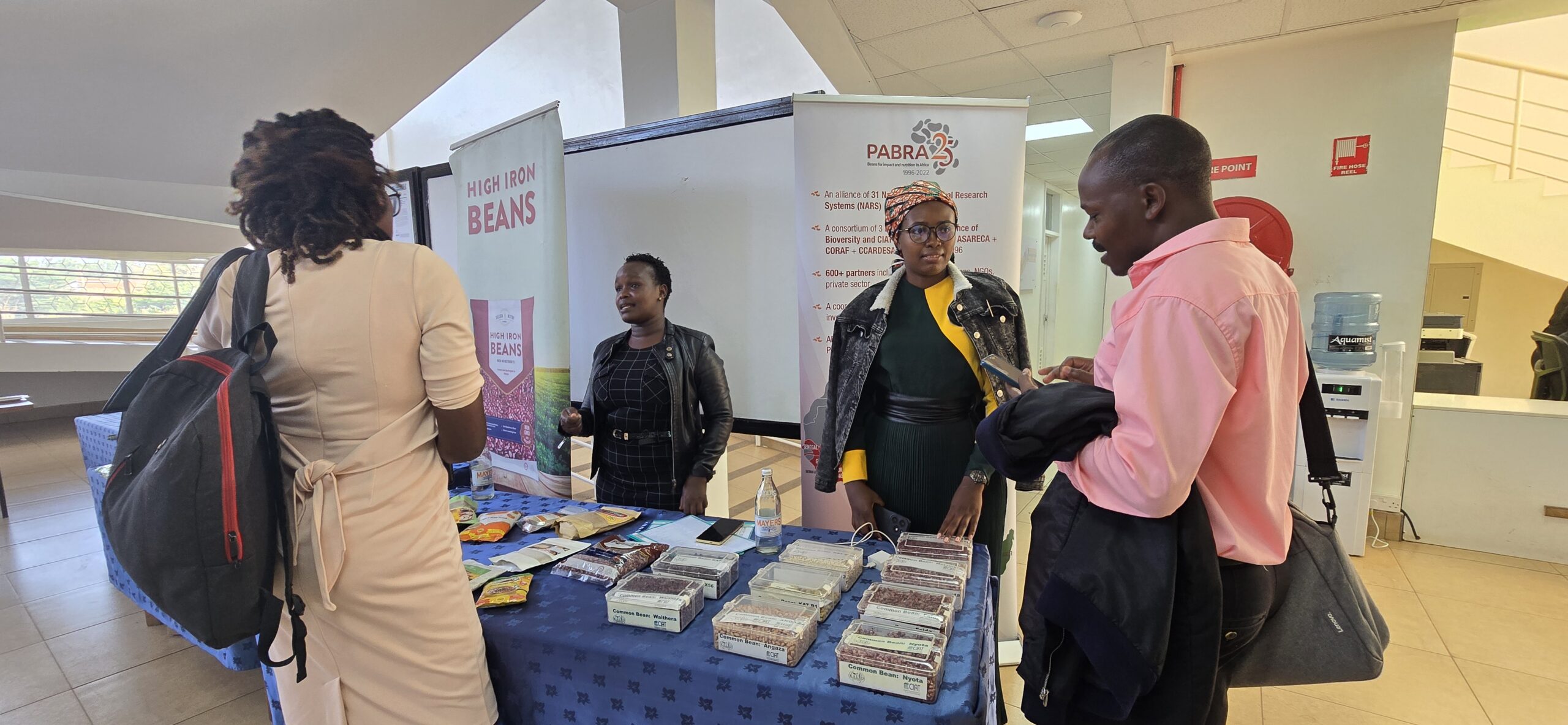
Farmers are now mastering the integration of beans and insects to maximize both agricultural productivity and profits
Beyond agronomic innovations, the initiative has actively embraced technology and financial tools to enhance its impact. Pilot programs, led by digital service provider Pesira, are introducing affordable planting equipment and digital platforms for real-time monitoring and evaluation. Pesira is also committed to improving financing access and business literacy among cooperatives and MSMEs, while digitalizing advisory services. These efforts are providing farmers with greater efficiency and project teams with improved data visibility.
Strategic partnerships have also been forged to address financial inclusion, notably with Equity Bank, to improve access to credit and enhance business literacy among smallholder farmers and cooperatives. Another significant milestone was the comprehensive mapping of private sector actors across the grain, insect, and honey value chains. This effort has helped establish stronger linkages between producers and markets, improving access, reducing post-harvest losses, and laying the groundwork for more robust value chain integration.
As Samuel Sana of Laceca Cooperative in Homabay explained, their integrated farming system, combining beans, avocado, mango, and insect value chains, is unlocking new economic opportunities for smallholder farmers. This diversification is enabling multiple income streams from a single farm ecosystem. However, challenges persist. Sana highlighted fluctuating bean prices as a major constraint. While some farmers have achieved yields of up to one-ton, inconsistent market pricing and competition from institutional buyers, such as schools offering lower rates, continue to undermine profitability and hinder long-term planning.
Key reflections
As BRAINS enters another year, stakeholders are united in their commitment to deepen impact, overcome persistent challenges, and scale what works. For the farmers, agrifood processors and other stakeholders at the heart of this transformation, the journey is far from over—but the seeds of success are undeniably sprouting.
For instance, Chalo Mutua Kyalo from Savannah Honey emphasized Savanna Honey’s commitment to improving farmer livelihoods through modern beekeeping techniques.
“Our goal is to make honey production viable and profitable for smallholders,” said Kyalo.
Savanna Honey currently supports over 7,000 farmers across six counties with training and technical assistance, including colony management, queen bee rearing and introduction. He noted that the high cost of Langstroth hives remains a major barrier and highlighted ongoing efforts to reach 50,000 farmers through innovative financing models, including a partnership with Equity Bank.
On her part, Delish & Nutri’s Virginia Gacheru underscored the company’s integral role in enhancing the High Iron Bean (HIB) value chain. Operating aggregation hubs in multiple counties in Kenya, the company connects farmers directly to institutional and retail markets.
“Nyota beans are a game-changer in both nutrition and productivity, but market systems need to catch up,” she remarked.
Commenting on the existing partnerships, Dr. Joshua Okonya, Program Officer for Technology & Innovation at the Association for Strengthening Agricultural Research in Eastern and Central Africa (ASARECA), said agricultural innovation cannot thrive in isolation. He singled out the importance of scaling solutions across borders through digital platforms and regional knowledge exchange.
He said: “When one farmer thrives, her neighbour must not be left behind. We rise by sharing tools, ideas, and technologies beyond borders.”
Africa Managing Director at the Alliance, Dr. Wanjiru Kamau-Rutenberg, framed BRAINS as more than just a project, but a compelling proof of concept for tackling agriculture, climate, and nutrition in an integrated way.
“BRAINS is where food security meets environmental stewardship—where a bean field becomes a frontline for nutrition and climate action,” she explained.
Agricultural Economist at KALRO, Alice Murage shared similar sentiments, emphasizing the importance of strong national ownership and alignment with country-led agricultural strategies.
“When national institutions lead, solutions last. Co-ownership is not just about participation—it’s about responsibility and sustainability,” said Murage.
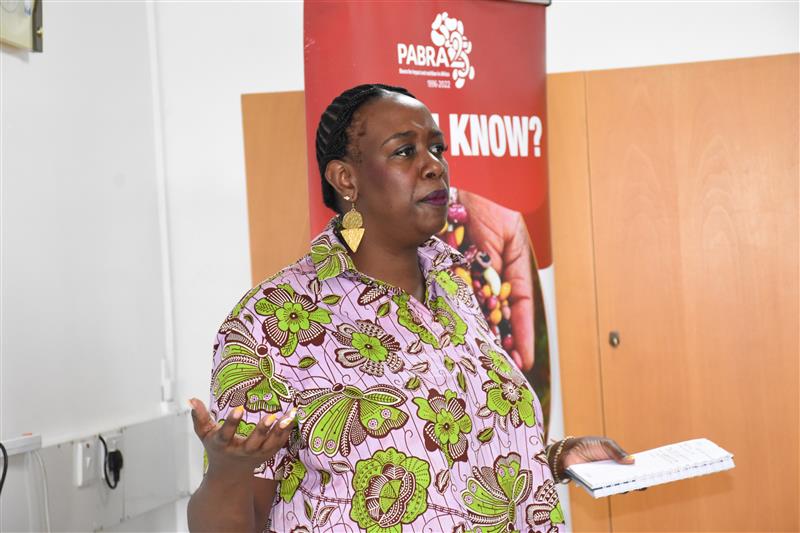
Kamau-Rutenberg calls BRAINS a proof-of-concept uniting food security, climate action, and nutrition.
Stumbles and solutions
Every growth story faces challenges, and BRAINS was no different. Challenges such as delays in partner onboarding, data gaps, particularly in conflict-affected or climate-stressed areas, underscoring the need for more adaptable and responsive digital monitoring tools. These issues have driven new partnerships with Equity Bank and Pesira, to improve financial access. A key recommendation was to trial affordable, nitrogen-rich frass fertilizer, showing the project’s commitment to cost-effective innovation.
Alicia Sosa, Project Officer in the Office of the Canadian Commissioner to Kenya, expressed optimism: “We are very excited about this project. While there have been challenges, the successes so far outweigh them.”
The upcoming phase also requires enhanced coordination with ongoing programs, the exploration of innovative financing mechanisms, and deeper alignment with national agricultural strategies. Capacity building through PABRA Academy, onboarding of service providers, and strengthening of multi-stakeholder platforms (MSPs) were highlighted as key enablers.

